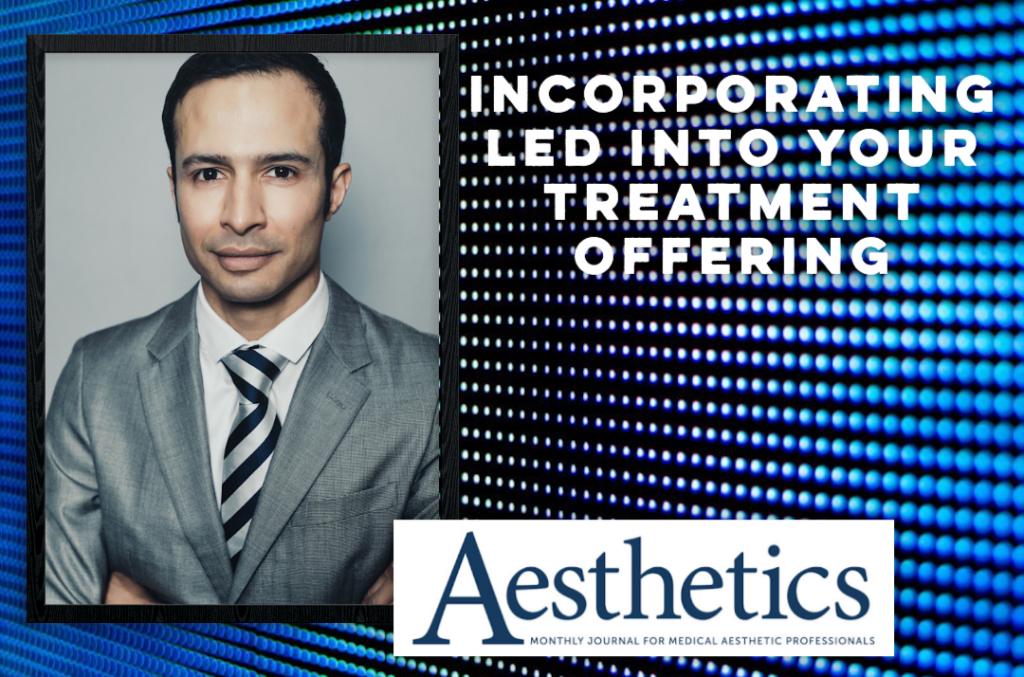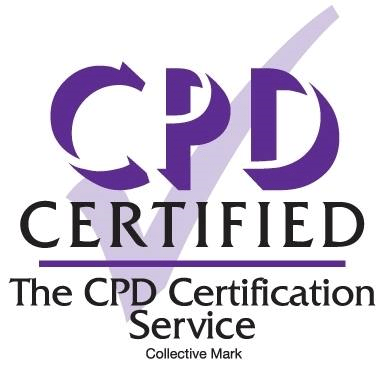Aesthetic Training Academy Director Mr Simon Ravichandran MBChB.MRCS recently spoke to Aesthetics Journal about how to incorporate LED into your treatment offering. He also spoke to Aesthetics Journal as part of their 15-minute fix on Instagram Live.

Dr Simon Ravichandran shares his tips on purchasing an LED device and marketing it to patients.
If your clinic is primarily focused on injectable procedures, you may have considered how you can grow your business by expanding your treatment offering with one of our various devices available on the market.
From body contouring to laser hair removal, there really is a lot to choose from and knowing what to go for can be challenging.
But have you ever thought about getting a light-emitting diode (LED) device? Studies suggest that LED can be effective in treating a variety of skin conditions, including acne and psoriasis, as well as helping general skin concerns on all skin types such as redness, uneven tone, and fine lines and wrinkles (1.2). With multiple benefits for a wide range of patients, it can also be a good commercial entity to add to your treatment portfolio.
Benefits to your practice
Aesthetic practitioner and multiple clinic owner Dr Simon Ravichandran has a number of LED devices. He says they can be a lot cheaper than other types of devices and, if marketed and used correctly, can offer a good return-on-investment (ROI). “If you compare the price of LED devices to some laser technologies, it’s not that expensive. ROI can also be a lot easier to achieve as LED is such a versatile treatment modality – you can use it for every patient – as a standalone or in combination with other procedures”. In Dr Ravichandran’s experience, having the ability to add LED to a treatment package can not just improve the outcome or reduce the recovery time, but can also enhance each patient’s experience. “They’re getting more out of their visit and improving interaction with the clinic, which increases patient satisfaction and helps to grow your relationship and business overall,” he says. LED can particularly benefit clinics that employ therapists, as treatment can easily be delegated to them. “It can be generating revenue for you while you do other work,” says Dr Ravichandran, explaining that in his clinic, he will do the original consultation with a patient and any injectable treatment, before handing over to a therapist with instructions on the parameters to use to treat the patient’s concern with LED.
Choosing a device
Choosing an LED device is the first step, with a number of different brands available in the UK. Dr Simon Ravichandran uses the Dermalux Tri-Wave and Flex devices – but says there are a variety of other available that can benefit patients. As with any new treatment, he advises practitioners look at all the clinical studies available, ensuring they are efficacious, conform to safety standards and, for an added benefit, look to see if they’ve won any awards or are recommended by respected practitioners. He also notes that you should find one that invests in development; ensuring that the training on offer is concurrent with the latest research.
Tips for using LED
Basic training on how to operate an LED device can usually be completed in less than a day according to Dr Ravichandran; however, he notes that some practitioners will always benefit from doing more research and developing a deeper understanding of its intricacies. He laughs, “if you’re like me, you can really get into the ‘nitty-gritty’ of scientific papers and spend a lifetime learning and tweaking the controls!”. Treatment outcome will depend on the condition being addressed. Generally, Dr Ravichandran says that significant results can be seen after 10 treatments and basic improvement in certain conditions can be seen after three. He says, “Take psoriasis as an example, I would recommend treatment two to three times a week – I have seen dramatic results after four weeks of LED alone. With concerns like general photorejuvenation to enhance collagen and improve skin texture, results won’t be as dramatic but you can definitely see visible results with 10 sessions or less.”
It is important to be aware that treatment with LED in contraindicated in those with light-sensitive conditions such as epilepsy or patients taking photo-sensitive medicine (1). Other than that, side effects are rare with no significant concerns reported (2).
Marketing and pricing
Some may argue that one of the main challenges of introducing LED to your clinic is convincing patients to opt for treatment. Unlike injectable procedures, it does not offer instant results. For Dr Ravichandran, solving this problem is all about data segmentation, good communication and being fully educated on how to achieve results.
He highlights that those who just come in for lip filler top up every few months aren’t necessarily going to become phototherapy patients. Dr Ravichandran, therefore, advises, “Those who invest in skincare, though, and are really focused on improving their skin condition, are the patients you need to target.” Of course, the consultation is then equally as important. “Show good before and after images, showcase testimonials and, of course, talk potential patients through the scientific results in a way they can understand,” he says, adding,”Remember to explain that you cannot guarantee quick results, but LED will benefit their skin over time.”
Deciding a pricing strategy for your LED treatments can be tricky, but will usually depend on your location and patient demographic. Treatments across the UK are generally priced between £20 to £60 per 20-minute session, with most distributors able to advise what will be suitable for your clinic location. Dr Ravichandran says it’s important to consider your projected income at various price points before making a decision.
Dr Ravichandran concludes, “LED is a solid technology that can offer high-quality results when the right device is used. In my opinion, any aesthetic practitioner that is serious about taking patients on a holistic journey through their clinic should be investing in device-led treatments and not solely relying on injectable treatment. Doing so will not only benefit your patients but could reap a commercial reward for your business too”.
References
- Opel, Daniel R et al, ‘Light-emitting Diodes: A Brief Review and Clinical Experience’, The Journal of Clinical and Aesthetic Dermatology Vol 8,6 (2015): 36-44
- Cherney K, LED Light Therapy for Skin (US: Healthline,2019) <https://www.healthline.com/health/beauty-skin-care/led-light-therapy>






